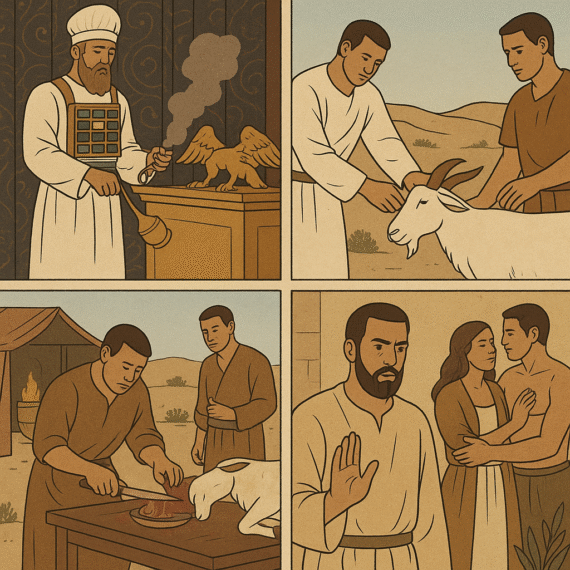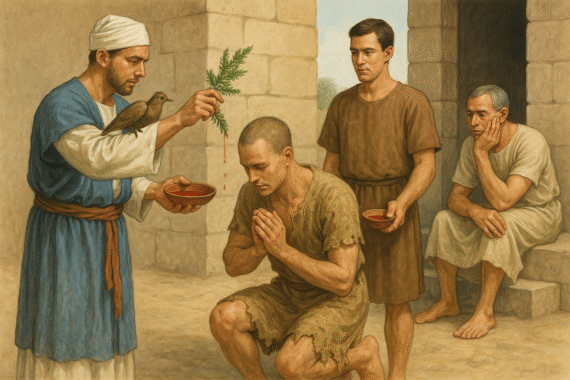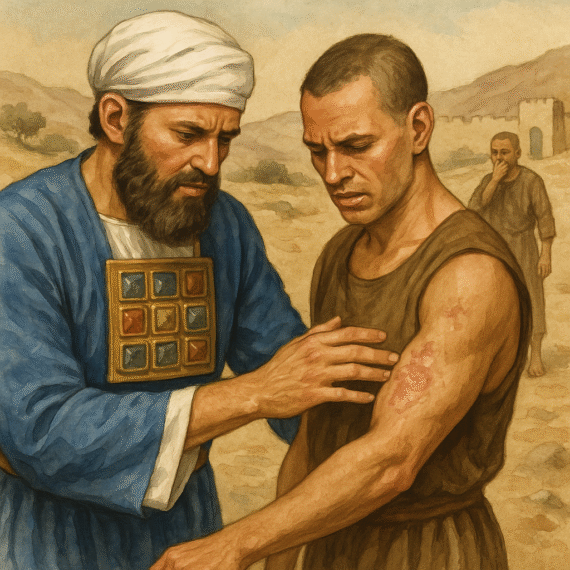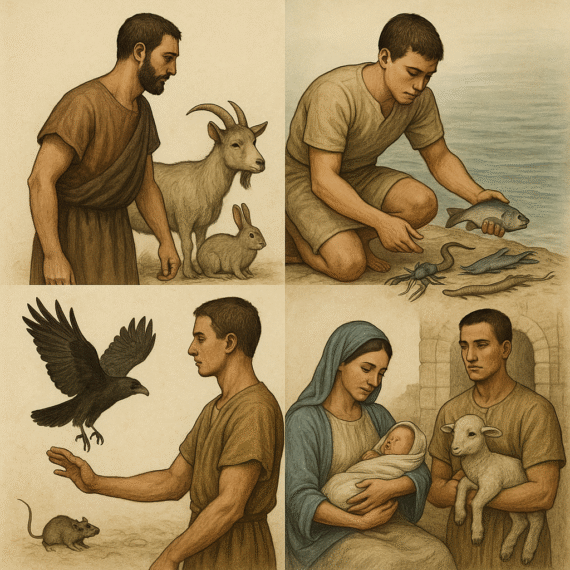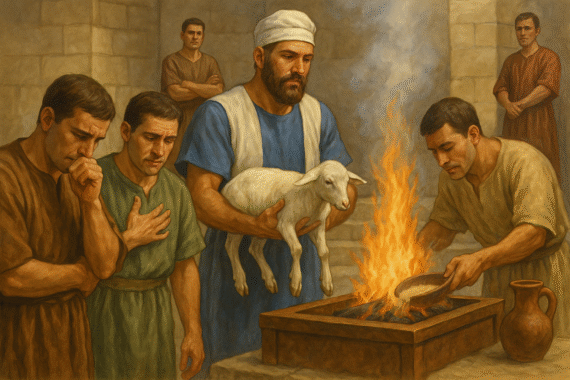Chapter 16 – The Day of Atonement God instructs Moses regarding Aaron’s duties as high priest. Aaron must only enter the Holy of Holies once a year, with blood and incense, lest he die. He is to make atonement for himself, his household, and all Israel. The ritual includes the […]
Bible Studies
Chapter 14 – Cleansing of Leprosy Ritual for Cleansing a Leper:When a leper was healed, he had to go through a detailed cleansing ceremony. This involved: Two birds, cedar wood, scarlet, and hyssop. One bird was killed over running water, the other dipped in the blood and released alive. The […]
Subject: Regulations concerning leprosy and skin diseases. This chapter provides detailed instructions given by God to Moses and Aaron regarding how the priests were to diagnose leprosy (a term that included a wide range of serious skin diseases, mildew, and infections). It is the longest chapter in Leviticus, emphasizing the […]
Leviticus 11 – Laws About Clean and Unclean Animals Leviticus 11 sets forth dietary laws distinguishing between clean and unclean animals: Land animals: Those that both chew the cud and have a divided hoof may be eaten (e.g., ox, sheep, goat). Animals that have only one of these traits (e.g., […]
Leviticus 7 – Laws of Offerings Provides detailed regulations for the guilt (trespass) offering and the peace offering. Specifies the priests’ portions from these sacrifices. Declares that the fat and blood must never be eaten. Summarizes the instructions for burnt, meat, sin, trespass, and peace offerings. Leviticus 8 – Consecration […]
Overview of Leviticus 5 Leviticus 5 continues the laws concerning sin offerings, particularly sins of ignorance or omission. Unspoken Witness (5:1): If someone knows testimony and refuses to speak, they bear guilt. Unclean Things (5:2–3): Touching an unclean animal, carcass, or human uncleanness unknowingly makes a person guilty once they […]
Leviticus 1 – The Burnt Offering God commands offerings from the herd or flock (bullock, sheep, goats) and also birds (turtledoves or pigeons). The offering had to be male and without blemish. The person offering would lay his hand on the animal’s head, symbolizing substitution. The animal was killed, its […]
